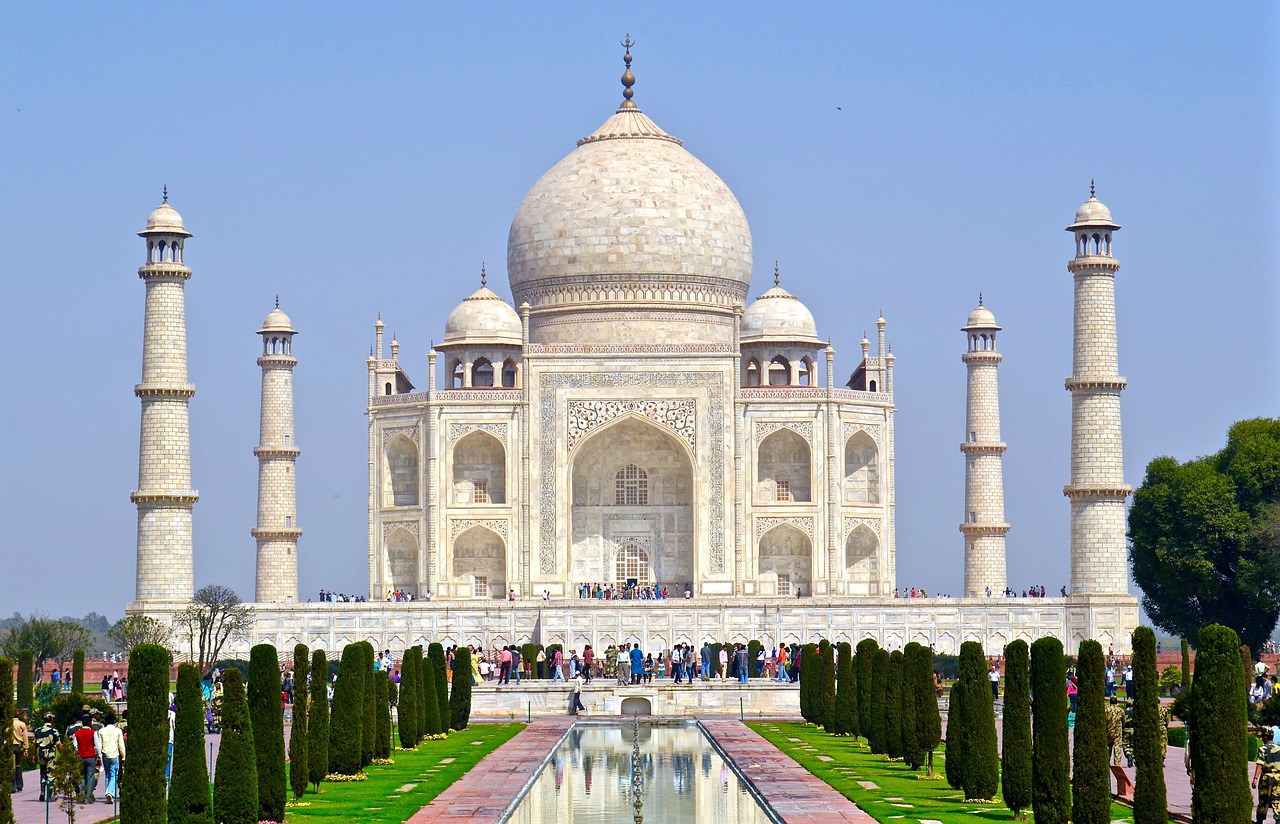India is a land of diverse cultures, rich history, and architectural brilliance that spans centuries. From ancient temples and majestic forts to cutting-edge modern skyscrapers, India’s buildings narrate the story of its past and its dynamic future. In this article, we explore some of the most iconic and significant buildings of India that symbolize the country's heritage and modernity.
Ancient and Historical Buildings of India
-
Taj Mahal (Agra)
A UNESCO World Heritage Site and one of the Seven Wonders of the World, the Taj Mahal is a symbol of love, built by Emperor Shah Jahan in memory of his wife Mumtaz Mahal. Its stunning white marble architecture, intricate carvings, and the reflection in the Yamuna River make it an eternal masterpiece of Mughal architecture. -
Qutub Minar (Delhi)
Built in the 12th century, the Qutub Minar is the tallest brick minaret in the world and a prime example of Indo-Islamic architecture. The 73-meter-high tower was constructed by Qutub-ud-din Aibak and is surrounded by several other ancient structures in the Qutub Complex. -
Red Fort (Delhi)
The Red Fort, or Lal Qila, is a majestic Mughal fortress constructed by Emperor Shah Jahan in 1648. With its red sandstone walls, intricate Mughal gardens, and pavilions, it was the main residence of Mughal emperors and now serves as a symbol of India's independence. -
Hampi Temples (Karnataka)
Hampi, a UNESCO World Heritage Site, was once the capital of the Vijayanagara Empire. Its complex of temples and monuments, including the Virupaksha Temple, showcases the grandeur of South Indian temple architecture. The buildings in Hampi are famed for their intricate stone carvings and stunning ruins. -
Meenakshi Temple (Madurai)
The Meenakshi Amman Temple, with its colorful gopurams (gateway towers), is one of the finest examples of Dravidian architecture. Dedicated to Goddess Meenakshi and Lord Sundareswarar, this ancient temple complex attracts millions of devotees and tourists every year.
Colonial and Post-Independence Architectural Marvels
-
Victoria Memorial (Kolkata)
Built in memory of Queen Victoria, the Victoria Memorial is an iconic colonial structure that combines Indo-Saracenic and European architectural styles. With its grand white marble façade and sprawling gardens, it stands as a symbol of British India's grandeur and legacy. -
Gateway of India (Mumbai)
The Gateway of India, located on the waterfront of Mumbai, was built to commemorate the visit of King George V and Queen Mary in 1911. This majestic arch, blending Hindu and Muslim architectural styles, stands as a symbolic gateway to India and an important historical landmark. -
Rashtrapati Bhavan (Delhi)
The official residence of the President of India, Rashtrapati Bhavan is one of the largest and most elegant buildings in India. Designed by British architect Edwin Lutyens, it reflects a mix of classical European and Indian architecture, with sprawling gardens and elaborate interiors.
Modern Buildings of India
-
Lotus Temple (Delhi)
One of the most iconic modern structures in India, the Lotus Temple is a Bahá'í House of Worship that symbolizes unity, peace, and tranquility. Its lotus-like design, made of 27 marble-clad petals, makes it a significant architectural marvel and a popular tourist attraction. -
Infosys Headquarters (Bangalore)
India’s IT sector has given rise to several modern architectural masterpieces, and Infosys’ headquarters is one of them. The glass and steel buildings, along with eco-friendly designs and landscaped gardens, represent India's technological advancements and innovative spirit. -
Antilia (Mumbai)
Antilia, the private residence of billionaire Mukesh Ambani, is one of the most talked-about modern buildings in India. This 27-story skyscraper in Mumbai is one of the most expensive private homes in the world, combining cutting-edge design with luxurious living spaces. -
Statue of Unity (Gujarat)
Standing at 182 meters, the Statue of Unity is the tallest statue in the world, honoring India's Iron Man, Sardar Vallabhbhai Patel. Located near the Sardar Sarovar Dam, this monumental statue is a modern engineering marvel that celebrates India's unity and strength. -
World One Tower (Mumbai)
World One, a residential skyscraper in Mumbai, is one of the tallest buildings in India, reaching a height of 280 meters. It is a symbol of India's urban development and luxury living, showcasing state-of-the-art technology and design.
Sustainable and Smart Buildings
-
ITC Green Centre (Gurgaon)
India is embracing the global trend toward sustainability with buildings like the ITC Green Centre. One of the most energy-efficient buildings in India, it uses eco-friendly materials, energy-saving systems, and advanced water management techniques, setting a benchmark for sustainable architecture. -
Indira Paryavaran Bhavan (Delhi)
This is India's first "net-zero energy" building, meaning it produces as much energy as it consumes. The Indira Paryavaran Bhavan incorporates green architecture principles, including solar panels, rainwater harvesting, and natural lighting systems, and is a model for future green buildings.
Conclusion
The buildings of India reflect its diverse cultural, historical, and technological journey. From ancient temples and forts to modern skyscrapers and sustainable structures, India’s architectural landscape is a testament to its evolving identity. As the country continues to develop, its buildings will undoubtedly play a significant role in shaping both its skyline and its story for future generations.
To buy RERA Certified & DTCP Approved Gated Community Villa Open Plots in Andhra Pradesh & Telangana please contact:
For Sales : 8179712384
Mail : sales@openplots.net
